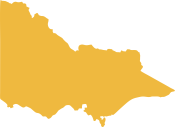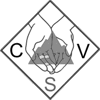We’ll add to these FAQ’s as we receive commonly asked questions. For now, here’s a few we expect people will be asking.
How is CSV Funded?
CSV is solely supported by donations from supporters and grants for specific projects where available. We have no membership fees.
Why do we need another organisation?
Crag Stewards has been set up as independent (rather than affiliated with any one climbing club) so it can draw in a wider variety of climbers, including some who are not inclined to be members of any climbing clubs. An independent organisation has autonomy and is not subject to the changes in leadership that could occur on a yearly basis if it was set up as part of another organisation.
How does CliffCare fit in?
Crag Stewards are currently working closely with CliffCare. CSV is looking after operational concerns of CliffCare as well as using the existing CliffCare education material, to ‘test the waters’ to see how a volunteer model can work. It is envisaged that CSV will continue to grow and increasingly take on the running of crag stewardship initiatives across the state. CliffCare will to continue to operate independently, and with autonomy to be able to focus on initiatives that it sees as key priorities. CliffCare also have a tax deductible status and may decide, if it is happy with CSV’s work, to financially support such work.
Can I become a member?
Anyone can sign up as a volunteer, but CSV does not have paid memberships. To have voting rights, you need to become a Steward (as Stewards commit to carry out a designated Steward’s role in order to earn the right to vote). This ensures that the most dedicated / involved people help steer the organisation.
Why not employ a paid access officer?
An access officer would be an expensive impost on the organisation’s funds (as it was for CliffCare). CliffCare experience has indicated that, though it had an excellent legacy of environmental works at crags, even with a paid position, it is difficult for a single individual to adequately service the needs of climbing communities right across the whole state.
Overseas experience indicates that an approach to crag stewardship based on volunteers active in their local climbing areas (but coordinated regionally or nationally) is more likely to engender more informed, nimble and appropriate responses to issues arising in local areas, is able to draw on good relationships with land managers at local crag level and is more likely to be financially sustainable.


